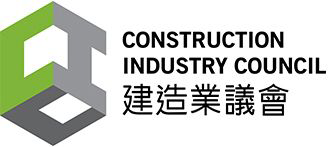
FREQUENTLY ASKED QUESTIONS
| 1. What are the foundational standards for this certification scheme? |
|
The Certification operates in accordance with several international standards and guidelines:
|
| 2. What is life cycle assessment (LCA) and why does the certification scheme adopt an LCA methodology? |
| Life cycle assessment (LCA) is a technique for assessing the environmental aspects and potential impacts associated with a product thoughout its life cycle, from raw material acquisition to final disposal and recycling. By conducting LCA to analyse the carbon footprint at each stage of a product's life, businesses can effectively target their carbon reduction efforts by identifying significant sources of GHG emissions. Additionally, clients purchasing construction products can understand the carbon embodied in the products they select, enabling them to reduce the carbon footprint of their construction projects by opting for low carbon products. |
3. What is the system boundary of life cycle stages set in this certification scheme? |
| The certification scheme covers the key stages of a construction product’s life cycle. For most products or materials under the CIC Green Product Certification, the system boundary covers at least A1 (raw material supply), A2 (transport), and A3 (manufacturing process), i.e., from cradle to gate. Only for rebar and structural steel materials, the system boundary starts from raw material acquisition (“cradle”) to product distribution until the construction product reaches the border of Hong Kong (“Site”).
The associated direct and indirect GHG emissions within the system boundary should be accounted for in the Carbon footprint of products (CFP) quantification and reporting.
|
4. Will CIC and / or HKGBC assess and verify the carbon footprint of products (CFP)? |
| No, neither the CIC nor the HKGBC directly estimates or verifies the carbon footprint of the applied product. Applicants are required to engage a Certified Carbon Auditor (CCA) for CFP quantification and reporting, and an independent Validation and Verification Body (VVB) for validation and verification of GHG assertions. The CIC is the owner of the Certification and provides the Assessment Guides and Quantification Tools, as reference sources for CCAs and VVBs. The HKGBC is the administrative body of the Certification, responsible for processing the application assessment of the CFP and verification report and issuing the certificates. |
5. Is it compulsory to have a CIC Green Product Certification to sell my products in Hong Kong? |
| No, the CIC Green Product Certification is a voluntary scheme. However, the Certification helps the manufacturers and suppliers upon entry to the sustainable material market. It aims to provide an industry wide standard and tool to facilitate the assessment of the carbon footprint of a building material and product. The CIC is collaborating with the HKGBC to link the CIC Green Product Certification with BEAM Plus, Hong Kong's green building certification, as well as rallying the Hong Kong government's involvement in formulating incentives to promote the use of certified building materials/ products. |
6. How can I use the CIC Green Product Certification label after the Certificate is issued? |
| To use the CIC Green Product Certification (CIC GPC) label appropriately, an agreement shall be signed between the Applicant and the HKGBC upon certification. Once the agreement is signed and the licence fee is paid, the CIC GPC label, along with product details, may be displayed in consumer information through print, online or other accessible media. |
| Privacy Statement | Terms and Conditions | Personal Information Collection Statement | Disclaimer |



